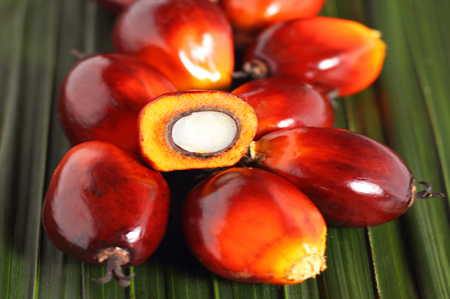Palm Oil – Will Output Recover in 2017, and Send the Rally into Reverse?
Category: Oilseeds
 (Agrimoney) – Palm oil futures rose a bit of a rollercoaster in 2016. While the early weeks saw prices extending their recovery from a six-year low reached in 2015, futures once again fell back as the half year stage (and peak production in South East Asia) approached.
(Agrimoney) – Palm oil futures rose a bit of a rollercoaster in 2016. While the early weeks saw prices extending their recovery from a six-year low reached in 2015, futures once again fell back as the half year stage (and peak production in South East Asia) approached.
However, prices recovered sharply from July, as evidence grew that peak South East Asian output would come in shy of expectations, a shortfall blamed on lingering damage from dryness caused by the 2014-15 El Nino. Furthermore, the revival in oil prices boosted values of a vegetable oil which is used largely in making biodiesel.
Kuala Lumpur futures have gained some 26% so far in 2016.
But will output now recover at last, and bring fresh price weakness in 2017? Or are factors, such as labour shortages, holding back output too?
Experts give their views on price prospects.
James Fry, LMC International
2017 should enjoy a sharp rebound [in international palm oil production].
In both the first half of the year and the second half, world output will be around 3m tonnes up on 2016.
By the second quarter, we will see very solid evidence that Indonesia’s revival in CPO [crude palm oil] output is gathering pace, with Malaysia eventually following suit.
Once currency factors settle down, the fundamentals all point to a sharp fall in CPO prices by June
The only thing that will stop CPO prices falling below $500 a tonne is the BPDP [the Indonesian oil palm estate fund, which oversees biodiesel subsidies in the country].
Instead of prices falling below $500, in 2017 Indonesia’s biodiesel policy will reveal its great value in stabilising the CPO market, allowing third-quarter FOB prices to settle around $500.
Comments taken from speech to the Indonesian Palm Oil Conference in Bali.
Rabobank
Following a very strong El Nino event in 2015-16, vegetable oil production in 2016-17 is forecast to rebound by 9m tonnes, or 5%, to a record 186m tonnes.
Palm oil production is forecast to grow by 5m tonnes in 2016-17, as improved rainfall in Malaysia and Indonesia will boost production well beyond its El Nino-depressed levels. The production recovery will be especially pronounced in the second half of 2017.
Palm oil demand growth will be slightly sluggish as traditional buyers such as China and India slow down their vegetable oil import growth rates. India is having a much better soybean drop in 2016-17, dampening the growth rate of vegetable oil imports towards 6%, from the five-year average of 12%.
Based on the heavier vegetable oil and oilseed complex, combined with limited demand growth and dollar/ringgit levels, we project [Kuala Lumpur] palm oil prices to decline 12% from 2016, to an average of 2,350 ringgit a tonne.
Substantially lower prices are especially projected towards the second half of 2017, as palm oil production begins to pick up.
VSA Capital
For 2017 we again forecast a positive year for palm oil prices, at least for the first half.
Stocks will remain low during these lower production months, plantations bounce back from El Niño perhaps more slowly than many traders expect, and exports to India recover from the current issues surrounding the availability of large denomination currency, which will likely exaggerate the already decreasing levels of in-country palm oil stocks in the short-term.
In the other main export market for palm oil, China, stocks are already at historic low levels, although we wait to see whether this is indeed a low or a new normal.
The Chinese government appears to be focusing more on rival soybean oil through increased imports and encouragement to increase its own modest levels of domestic production.
However, the election of Donald Trump in the US may swing this focus back towards palm oil, given his articulated views on China and China’s own moves to take the initiative away from the US with regards to South East Asia trade
Towards the back end of 2017, and into 2018, it is possible we may see some softening of palm oil prices as the US soybean crop is harvested and the impact of El Niño is finally removed from palm oil estates, which may result in a prolonged period of flush production.




